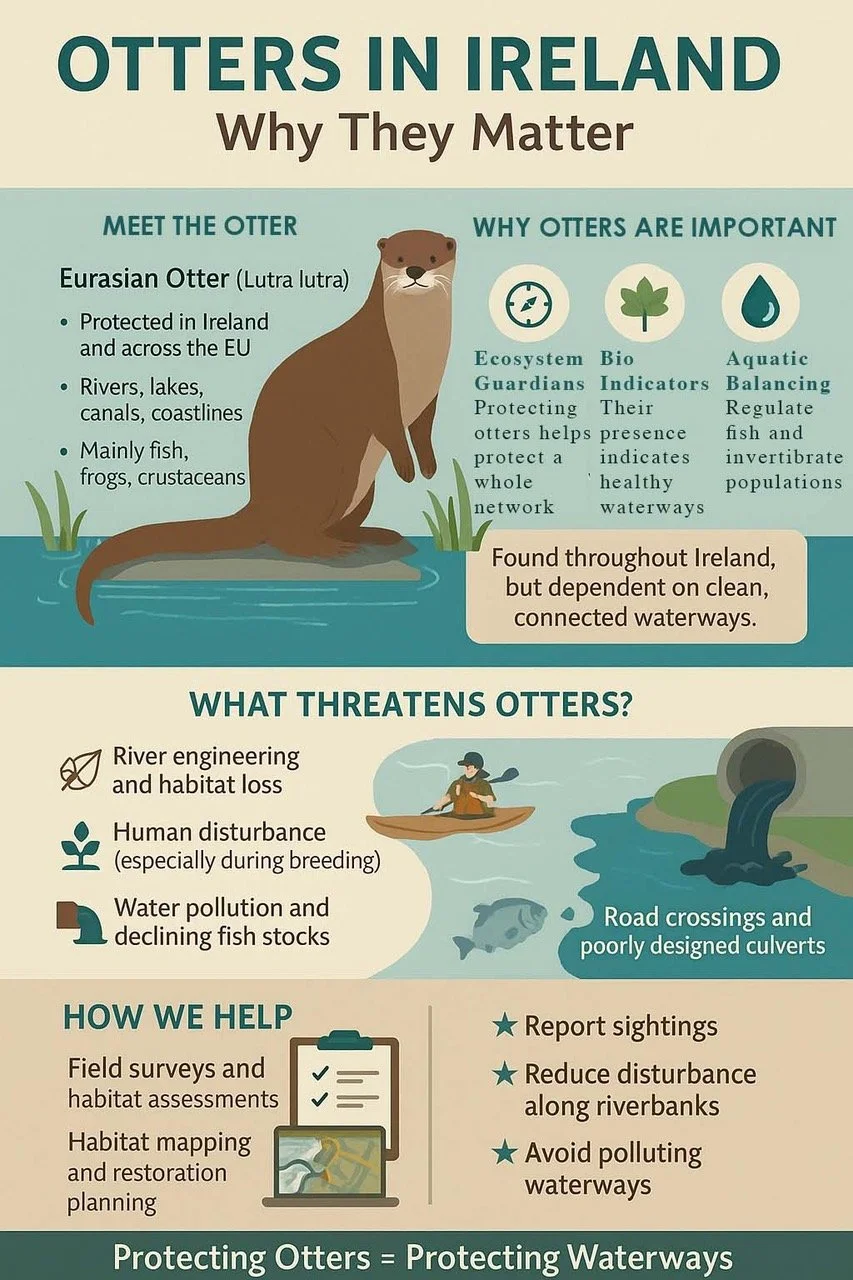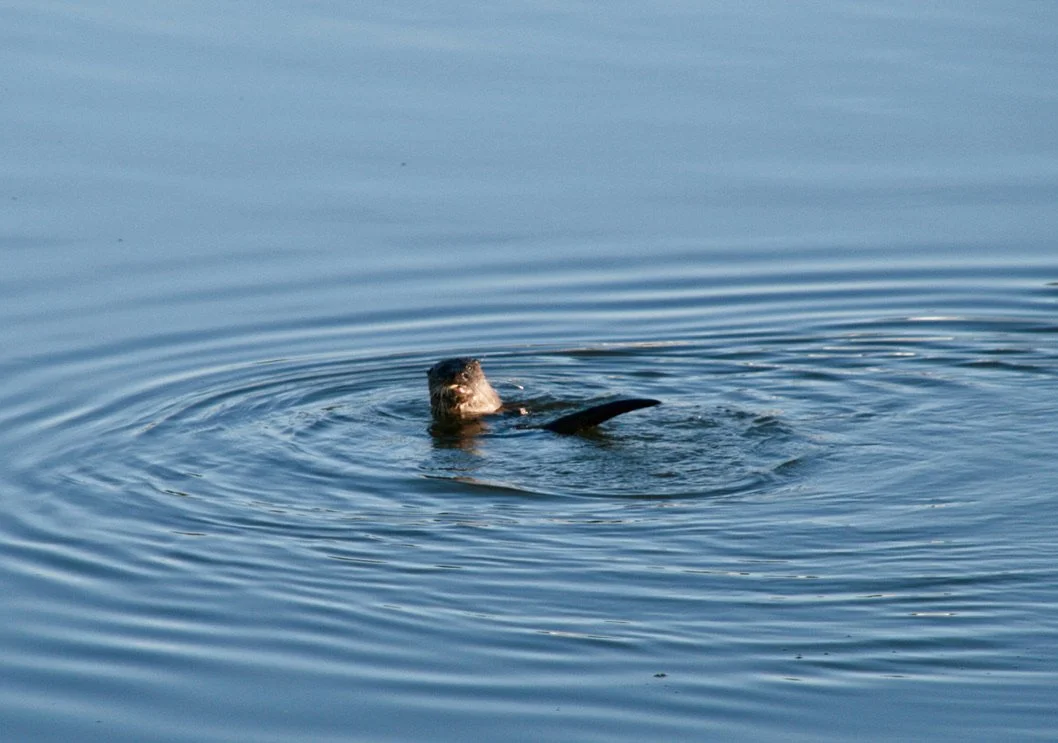World Otter Day - Celebrating Ireland’s Freshwater Icon
Why protecting otters means protecting our wetlands
World Otter Day is celebrated annually on the last Wednesday of May to raise awareness and support for otter conservation. So, every year on World Otter Day, we take a moment to appreciate one of Ireland’s most charming – and important – native mammals: the Eurasian otter (Lutra lutra). Sleek, secretive, and surprisingly widespread, the otter is not just a delight to spot in the wild – it’s also a vital indicator of environmental health.
Why otters matter
Otters live along rivers, lakes, canals, and coasts across Ireland. But they’re not always easy to see. These mostly nocturnal animals rely on clean water, undisturbed banks for resting and breeding, and plenty of fish and amphibians to thrive.
Because they’re so sensitive to changes in their environment, otters are often referred to as an “umbrella species”. Protecting otters and their habitats helps safeguard a much wider range of biodiversity. When otters are doing well, it’s a good sign that the surrounding ecosystem is in good shape too.
Pressures on otter populations
While Ireland still supports a healthy otter population compared to many other European countries, they’re not without challenges. These include:
Habitat loss due to development, drainage, or river modification
Declining water quality from pollution or agricultural runoff
Barriers to movement, such as poorly designed culverts, weirs, or bridges
Disturbance from recreation or construction near rivers and lakes
Otters are a protected species under Irish and EU law, meaning any work or development near water must consider their potential presence and avoid damaging their habitats. You can find out more about that through this leaflet from NPWS.
How our work supports otter conservation
At Wetland Surveys Ireland, we frequently carry out surveys to detect otters as part of ecological impact assessments, appropriate assessments for planning, and river or wetland restoration projects.
Our work includes:
Surveys for signs of otter activity (such as spraint, footprints, or holts)
Assessment of habitat quality and connectivity along watercourses
Advice on mitigation measures, such as retaining vegetated banks, timing works to avoid disturbance, or installing otter-friendly crossings
Monitoring and mapping as part of larger catchment or wetland projects
This type of work isn’t just about legal compliance – it’s about ensuring developments go ahead in a way that respects and protects our natural heritage.
What you can do
Even if you’re not working directly on a water-related project, there’s still plenty you can do to support otters:
Keep rivers and wetlands clean – avoid dumping or polluting
Report sightings to the National Biodiversity Data Centre
Maintain native vegetation along riverbanks if you own riverside land
Get in touch if you’re planning works near water – surveys might be needed
A shared responsibility
Otters have lived alongside us in Ireland for thousands of years. They’re woven into our stories, art, and landscape. But their future depends on our shared effort to protect the places they call home.
So this World Otter Day, let’s take pride in our rivers and wetlands – and the species that depend on them. And let’s keep working together to ensure otters remain a welcome part of Ireland’s wild future.
Need help with a riverside or wetland project?
We’re here to help with surveys, planning support, and ecological advice.


